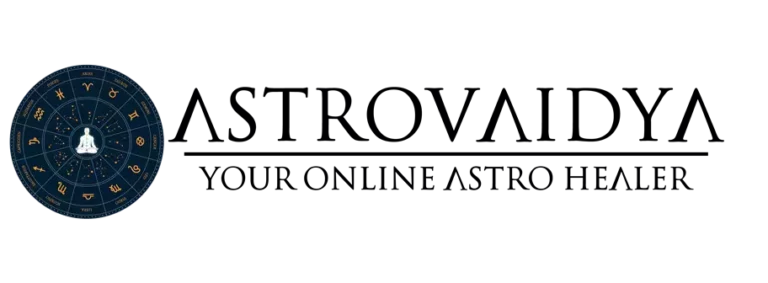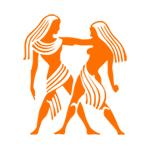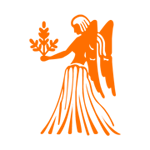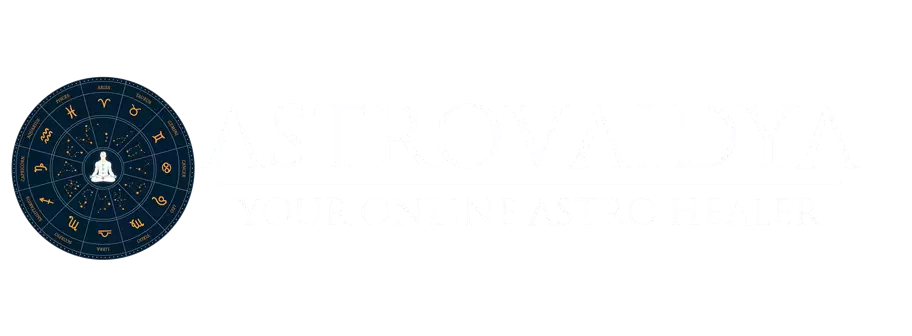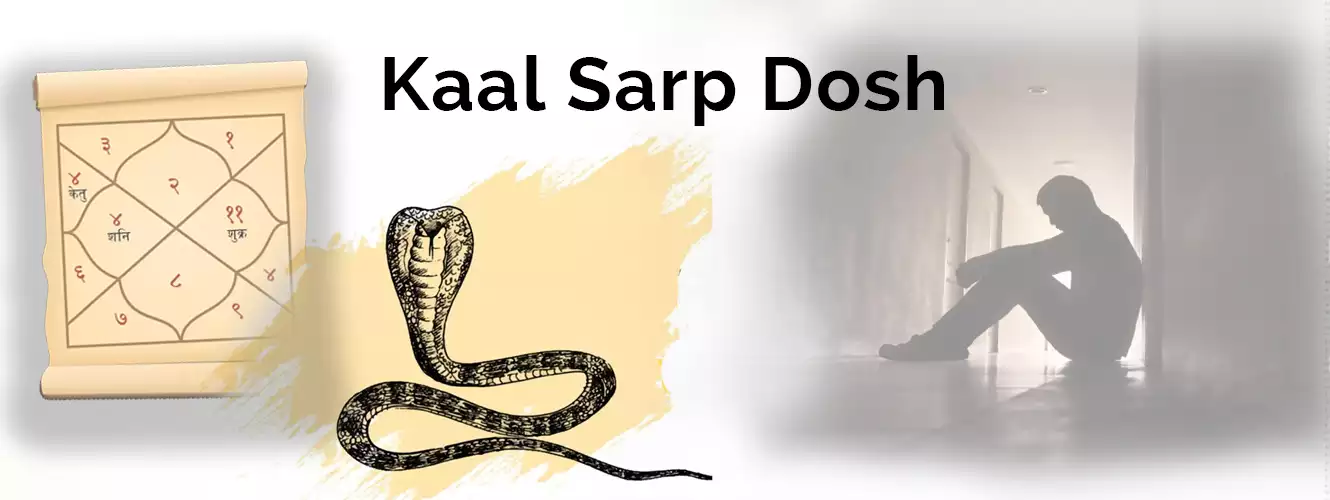
Kaal Sarp Dosh
Kaal Sarp Dosh arises from the alignment of planets on opposite sides of the Rahu and Ketu axis in a horoscope. This alignment is believed to potentially bring challenges to an individual’s life. Nonetheless, this belief isn’t universally applicable. Many individuals exhibit the presence of Kala Sarpa Dosha in their birth charts while still achieving success in their respective life domains. You can determine whether this alignment exists in your birth chart using our Kaal Sarp Dosh finder tool.
This yoga is thought to originate within a birth chart as a consequence of negative actions committed in past lifetimes. If this configuration is present in an individual’s Kundali, it might lead to consistent mental instability. Vedic Astrology outlines remedies and a specific Kaal Sarp Dosh Puja intended to counteract its influences. It’s crucial to gain a comprehensive understanding of this yoga before delving further into the topic.
What is Kaal Sarp Yog?
Kaal Sarp Yog materializes when all seven prominent planets—Sun, Moon, Mercury, Venus, Mars, Jupiter, and Saturn—are enclosed between the celestial bodies Rahu and Ketu. Given that Rahu and Ketu are positioned 180 degrees apart, a scenario arises where the remaining seven planets may reside within this interval. This planetary arrangement in a birth chart is recognized as Kaal Sarp Yog.
In the analysis of Kaal Sarp Dosh, it’s essential to examine the degrees of the planets. For instance, if Mars and Rahu are in the same sign with Mars at 10 degrees and Rahu at 10.5 degrees, this constitutes Kala Sarpa Dosha. Conversely, if Mars has 10.5 degrees and Rahu has 10 degrees, it won’t be considered Kaal Sarp Yog since Mars lies outside the Rahu and Ketu axis. For the formation of this yoga, the degrees of Rahu and Ketu must exceed those of the other seven planets within the same sign.
Since this yoga arises due to the influence of the planets Rahu and Ketu, it’s important to comprehend these celestial bodies—what they signify and how they create alignments with other planets to yield specific outcomes based on their placements in a horoscope.
What is Rahu?
Rahu is often referred to as the “head” of the Serpent. It exists as a shadowy planet or “Chhaya Grah,” lacking a physical form. While it is technically the north node of the Moon, Vedic Astrology treats it as a planet since, like the seven major planets, it impacts individuals. Regarded as malefic, Rahu possesses only a head, which symbolizes its tendency to consume without digesting. It constantly seeks to accumulate more. Rahu finds its exaltation in “Taurus/Gemini” and exhibits traits akin to Saturn.
What is Ketu?
Ketu is denoted as the “tail” of the Serpent. Like Rahu, it is a shadowy planet or “Chhaya Grah,” without a physical presence. It represents the south node of the Moon, influencing human lives just like the major planets. Due to its partial form—only a tail or torso—Ketu is disinterested in material gains. It is a highly spiritual planet that aspires solely to salvation or Moksha. Ketu is also linked to the planet Jupiter. It reaches its exaltation in “Scorpio/Sagittarius” and embodies qualities reminiscent of Mars.
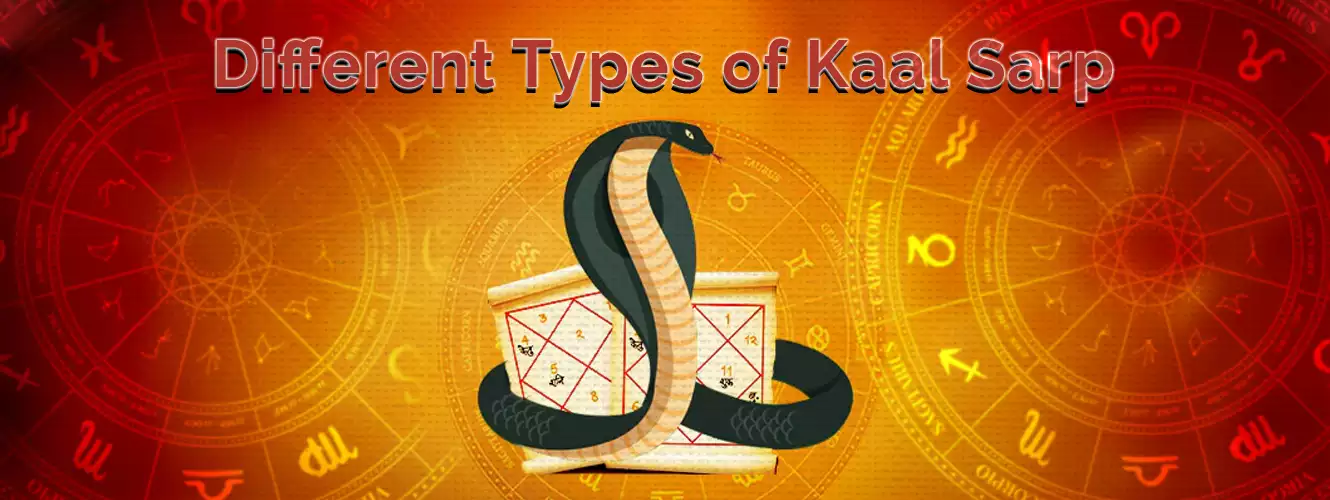
Different types of Kaal Sarp Yog
The formation of this Yog can occur in various manners, reflecting the 12 houses delineated in Vedic Astrology. Consequently, it can manifest in 12 distinct ways within an individual’s natal chart. The following are the names of the different Kaal Sarp Yog formations:
Anant, Kulik, Vasuki, Shankhpal, Padam, Maha Padam, Takshak, Karkotak, Shankhnaad, Ghatak, Vishdhar, and Sheshnaag Kaal Sarp Dosha.
Effects of Kaal Sarp Dosh
While it’s commonly believed that this yoga ushers misfortune across all aspects of life, this isn’t an absolute truth. Although it may introduce obstacles in areas like health, wealth, career, relationships, marriage, children, and other life events, it can ultimately lead to personal growth through adversity. Understanding the precise impact of Kala Sarpa Dosha for an individual necessitates a close examination of the specific placements of the shadow planets Rahu and Ketu in the horoscope.
For instance, if Rahu is situated in the first house and Ketu in the seventh, challenges might arise concerning the self and wealth accumulation. If this alignment occurs in the second and eighth houses, there could be issues with family relations, wealth, and matters linked to the second house. The impact of this Yoga can be assessed through the 12 houses in the horoscope based on the placements of the shadow planets.
Myths about Kaal Sarp Yog
Many individuals view this as an unfavorable conjunction or planetary alignment within their birth charts. Yet, none of the ancient astrological texts explicitly mention this Yog. Rather, it emerged as a concept devised by contemporary astrologers over time. As astrology evolved, practitioners discerned certain planetary configurations influencing life events, either positively or negatively. Consequently, Kaal Sarp Yog can be interpreted as both auspicious and inauspicious, contingent upon the positions of other planets in the Natal Chart. Let’s delve into its potential inauspicious effects on an individual.
Inauspicious Outcomes
You could encounter a range of challenges in your life, even facing situations resembling death. Issues such as illnesses, loss of prestige, and financial setbacks might arise. Attaining what you truly deserve might prove elusive. Here are some difficulties that may emerge if an unfavorable Kaal Sarp Yog is present in your birth chart.
- The occurrence of obstacles during auspicious ceremonies.
- Problems related to delayed marriage, difficulties in progeny, or marital discord.
- Obstacles in conception or delayed childbirth.
- Occurrence of prolonged illnesses and accidents within the family.
- Struggles for mental tranquility and family disputes.
- Impediments to career advancement, increased debts, and financial fluctuations.

General Remedies, Upay & Kaal Sarp Dosh Puja
- Engage in the worship of Lord Shiva and recite Lord Shiva’s Mantra or the Gayatri Mantra.
- Observe fasting, perform pujas, and conduct Rudrabhishek to appease Lord Shiva during Maha Shivratri, Shravan Somvar, and Sawan Shivratri.
- Regularly offer water to the Shivling in a Lord Shiva temple.
- Present offerings like Bel Patra, plums, fruits, flowers, and raw milk to the Shivling.
- Recite the Maha Mrityunjaya Mantra as a remedy to alleviate the effects of this yoga; it proves particularly effective.
- Consider offering food to a dog, or better yet, keeping a dog as a pet at home.
- Perform the Kaal Sarp Dosh Puja in Ujjain.
Auspicious Outcomes
While Kala Sarpa Dosha exerts malefic influence, there is another facet to this yoga that can be deemed beneficial. When the same alignment occurs in Kendra or Trikona houses, it takes on a positive aspect. You may ultimately thrive in the face of adversity. Initial or early-life struggles might be present, but ultimately, this yoga bestows blessings. Numerous renowned figures have been born under this yoga, so there’s no cause for excessive concern. Individuals born under this yoga often exhibit high intelligence, diligence, energy, and skill in management and planning.
Many prominent leaders, corporate managers, scientists, businesspeople, civil servants, and other notable figures possess this yoga in their charts. They’ve managed to rise above adversity, with early-life challenges transforming into later-life successes.
In conclusion, it’s advisable to maintain a positive outlook. The rationale is that Kala Sarpa Dosha might propel you to great heights of success, allowing you to showcase your talents to the world and reap the rewards you rightfully deserve.

